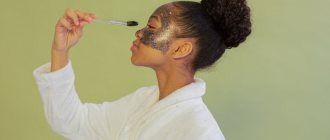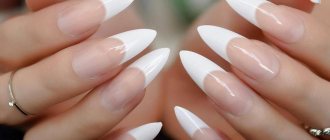Causes
Itching, redness, cracking of the surface, extremely uncomfortable sensations - any of us are familiar with this condition of the epidermis.
For some, a noticeable deterioration is associated with hormonal levels, for others - with cold weather (they often talk about an allergy to cold, although in its pure form it is rare). Only a thorough and comprehensive diagnosis will help answer the reason for the deterioration of the condition. Many patients come with the question: if the skin of the body is very dry, then what should be done? What means to choose to get rid of the problem? However, the doctor will first of all find out why it occurred.
There can be many “triggers”. Let's list some of them:
- Exposure to external factors, including sunlight, air conditioning, temperature changes, and so on.
- Age-related changes (senile xerosis).
- Lack of vitamins, including A, E and C. They are often called the “secret of youth,” although there is no secret in their action. These important components fight antioxidants, maintain the balance of the epidermis and its tone.
- The innate physiological characteristics of the body often answer the question of why the skin becomes dry. This is a so-called constitutional disorder, which is often observed in childhood, when parents of children aged 2 years and older pay attention to poor epidermis.
- Xeroderma is a pathological situation; defects are mainly visible on the face and flexor surfaces. In this condition, the permeability of the epidermal barrier is impaired.
- Allergic reactions.
- Various diseases, including fungal ones.
- Dermatoses also become a factor in the patient developing dryness, and the causes are called differently: contact and allergic, ichthyosis, psoriasis, but all of this is one class of pathologies.
Eastern beauty secrets: Turkish massage and hammam
Another effective method for body care. It is recommended for comprehensive health improvement of the body. This procedure helps to normalize metabolic processes and perform gentle cleansing.
!Hammam is not recommended for people with inflammation, diseases of the cardiovascular system, asthma, varicose veins and pregnant women.
Traditionally, the visit is divided into four stages.
Warming up
Warm and moist steam opens pores, relaxes muscles, and removes toxins.
Manual peeling
It is carried out using a rough woolen mitten and black soap, which is made by hand. It contains argan, olive oils, eucalyptus and has a complex effect on the epidermis, cleansing and nourishing it. The product has a delicate and light consistency, prevents fading, and does not cause allergies. Body scrubbing takes a long time. During this time, keratinized particles are removed, and a fresh and healthy appearance returns.
Massage
Moisturizing components are applied to the heated surfaces. They are perfectly absorbed and give softness and smoothness.
Wraps
They are also carried out using various oils, honey, essences, sea salt, algae, and special clay. At the very end of the procedure, you are lowered into fairly cool water. This closes the pores.
In addition to cleansing and nourishing the skin, hammam helps in the fight against excess weight. Light warm steam activates metabolism, enhances lymph circulation, thereby eliminating unevenness.
Cosmetics for Turkish massage at home
For peeling, you can make a scrub from several ingredients. You will need oatmeal, almond flour and rolled oats soaked in milk. A small part of this mixture is separated and distributed over the face with weightless movements so as not to injure it. What is left is tied into a cloth or a special bag and rubbed with it.
Another remedy is a mask to remove orange peel. You only need 2-3 drops of quality essential oil. Mix them with two to three tablespoons of honey. Then apply to problem areas, wait one or two minutes and massage, moving from bottom to top.
Mix persimmons (1 tablespoon) with three ingredients in one container: olive oil, honey and egg yolk so that they can be spread on the face. Apply and rinse after 15 minutes.
Signs
It would seem that the fact that you have difficulties with the epidermis is understandable without additional explanation. However, there are a number of symptoms that are often not paid attention to, while they serve as a kind of “bell” that you need to check your health:
- after washing there is a feeling that the face, body or hands are “tight”;
- red spots appear;
- itching begins, which causes serious discomfort;
- Cracks and scratches easily form on the surface.
If you have very dry skin on your body, your doctor will tell you what to do. Unfortunately, often a simple change of cosmetics is not enough; comprehensive measures must be taken: change your diet, give up bad habits, monitor which products and materials may cause unpleasant reactions, identify medications that require caution when taken.
How and what is the best way to moisturize dry body skin: step-by-step care at home
To begin with, we will give a few recommendations that will help you not waste your energy and money and get results from the procedures as quickly as possible.
- Don't save money by buying the same product as for your face. You just won't get the desired effect. The fact is that the skin on the body is thicker and has a different structure.
- Apply cosmetics in a thick layer.
- Remember about massage? If you don't have time for it, do vigorous exercises. It works the same way.
Superficial cleansing
First step. The temperature should be moderate. But a contrast shower will also suit your purposes. Especially if it is important to cheer up. It is necessary to rub with a rough or hard device from bottom to top. A washcloth-mitten, brush, or loofah will do. The keratinized cells will exfoliate, and the lymph flow will be activated. A hot bath, especially more than once a week and longer than 20 minutes, is a taboo for anyone who cares about their skin. With the right approach, it is useful to add essential oils and sea salt to it. They relax and tone. Be careful when purchasing ready-made foams and bombs, as they may contain aggressive drying substances.
Deep cleansing
This is the second, important stage in care procedures. But it cannot be done every day. For dry skin, once a week is enough. For fatty women – two, maximum, three times. Usually recommendations are indicated on the cosmetics label.
Most often these are various scrubs. After using them, old cells are removed and the body becomes smooth and soft. Such products can only be applied to moisturized skin. The more sensitive it is, the smaller the particles should be. Using light, circular movements (do not rub or press too hard!) distribute the mixture. Leave it on for three to four minutes and rinse off with warm water. Do not rub yourself with a towel, just blot away excess moisture.
Hydration
This is the final and mandatory (especially after peeling) stage. But there are two rules that must be followed. Do not perform procedures more than twice a day. If you do this more often, the epidermis will no longer independently secrete a secretion that forms a protective film. Do not mix different formulations. The components will neutralize each other's effects, which will cause allergies or reduce all your efforts to zero.
Differences between dermis types
To choose the right caring cosmetics, you need to know what you are dealing with and what specific features you have. There are four types in total:
- dry;
- fat;
- combined;
- normal.
These characteristics are determined by genetics, but lifestyle, environmental factors and health play a huge role. To find out which epidermis you have, do a simple test. Clean your face with a mild cleanser, pat dry with a towel, and do not apply any cosmetic creams or serums. Assess the external shine after about an hour.
First type
After washing your face without using moisturizing ingredients, you may feel some tightness. When you blot with matting wipes, you notice that there are no traces of grease left on them. This means that you have dry skin on your body - the reasons, as we have already said, lie in genetics, but improper care and lifestyle usually aggravate the problems.
As a rule, the basis for their manifestation may be a lack of lipids; the protective layer on the surface becomes thinner and becomes permeable. Unfortunately, such features lead to the fact that with age, deeper and more pronounced wrinkles appear on the face, as the epidermis loses its plasticity and ability to replenish volume. Creases occur more easily and last longer.
Second type: normal
In the modern world, where we are influenced by dozens of unfavorable factors, it is not so easy to meet a person with this type. Even if the sebaceous glands are naturally balanced, many circumstances, including health conditions and the use of cosmetics, can disrupt the harmony. And in this case, the doctor hears the question, why is the skin on the face very dry? Normally, sebum secretion occurs evenly and there is no shine. As a rule, the pores are not enlarged, small, blood circulation is good, the complexion is even, the texture is smooth and silky, there is no inflammation or acne. The epidermis is not sensitive, but with age it usually becomes denser, easily injured, itching and peeling occur, areas whose condition causes concern. Then patients turn to a dermatologist or cosmetologist with the question of how to get rid of dryness.
Third type: fat
If, after performing a home test, you see that the cleaned surface begins to shine within an hour, and pronounced traces of grease remain on the matting paper, then you have this type. The reasons for increased sebum production, in addition to congenital characteristics, may be:
- hormonal imbalance;
- use of certain drugs;
- stress;
- cosmetics that lead to the formation of comedones, etc.
Dry back skin
Even moisturizers can be dangerous for the skin - creams, the ingredients of which include hyaluronic acid, petroleum jelly and glycerin, mineral oil and paraffin, draw moisture from the deep layers of the epidermis to the surface at low humidity or in rooms with dry air.
Moisturizing your back skin
The dermis looks healthy, firm and elastic if it receives sufficient moisture.
If this condition is not met, it becomes sensitive and even painful. The amount of moisture in the skin is regulated by the lipid layer formed by sebum and horny cells. Dry air also dries out the dermis - a consequence of the operation of an air conditioner or heater. To improve the situation, you should ventilate the room more often, and, if possible, place containers with water; vases with flowers are ideal for this. It is necessary to pay attention to nutrition . Water, juices and low-fat fermented milk drinks can provide the required volume of fluid; on the contrary, coffee, strong tea and alcoholic drinks contribute to dehydration. It is worth giving preference to walnuts, red fish, buckwheat, seeds, vegetable oils, beef liver, eggs, sea buckthorn, broccoli, cherries, legumes, rowan berries, carrots, tomatoes, herbs - products containing vitamins A, C and E.
Caring for dry back skin
When caring for problematic dermis, you need to choose the right cleansers and moisturizers: lotions and creams should not contain alcohol and mint, menthol, eucalyptus, or citrus essential oils. Instead, they should contain waxes, mineral oils, non-ionic detergents such as esters and fatty acid micelles. In addition, they should only be applied to a damp body - after taking a shower or bath, you should lightly blot it with a towel, but do not wipe it completely. This will retain any remaining moisture. Salt baths or swimming in the sea are certainly beneficial, but afterward you should rinse with cool water.
This problem can be overcome with the help of external use of oils : sesame, castor, primrose, apricot kernels, bay tree; medicinal herbs: coltsfoot, wormwood, kirkazona, burdock, peppermint; valerian roots; as well as vitamins A and E. Baths with leaves of plantain, yarrow, tricolor violet, coltsfoot, walnut, roots of spiny fox and barberry, oak bark, juniper, flaxseed, bran and starch are very effective. An effective way is to use lemon balm, elecampane, dill, and Jerusalem artichoke internally.
Types of dryness
Problems with the epidermis are different: some suffer from constant discomfort, others develop unpleasant cracks and roughness in the cold, others complain of pockets of itching and burning. All this can be a consequence of various circumstances, including errors in choosing care, errors in nutrition and various factors that provoke allergies and dermatitis. Many women turn to their doctor with the question: very dry skin on the body - what to do? First of all, it is necessary to establish what type of problem a particular patient is:
- constitutional;
- acquired;
- pathological
Atopic dryness
This condition is also called endogenous eczema and is the result of a chronic disease that constantly recurs, accompanied by itching, rashes, and significant deterioration of the skin. The disease is not contagious, but can be inherited. Atopy is characterized by periods of exacerbation and remission, when there are no negative manifestations. However, this does not mean that the pathology has disappeared on its own; one should not relax in such a situation.
If you are worried about atopic severe dry skin of the body, the reasons are most likely a genetic disorder. The synthesis of filaggrin, a protein that is involved in the formation of a protective barrier, is imbalanced. Therefore, if parents have dermatitis, then with a high probability it will manifest itself over time in subsequent generations.
Quite often, the precursor to painful peeling is diathesis in childhood. Typically, every tenth child suffers from this disease, while among adults the disease occurs in approximately 1% of cases. Often these patients also struggle with asthma or chronic rhinitis. Allergic diseases aggravate the situation - this is already a violation of the immune system. The problem is also aggravated by climatic conditions, household pollution, frequent friction and pressure on parts of the body.
Acquired
It occurs as a result of exposure to a number of negative factors. These include:
- ultraviolet;
- temperature difference;
- ambient air conditioning, too active operation of heating radiators;
- improper care using aggressive agents;
- therapy, including the systematic use of creams containing retinoids;
- chemicals (for example, if you have dry skin on your body, the reasons may be due to production factors);
- incorrectly selected or performed cosmetic procedures.
Senile
The loss of moisture is prevented by the so-called epidermal barrier. Cells tightly adjacent to each other, epithelial cells, prevent water from evaporating. Helps maintain the integrity and reliability of this boundary, sebum, which additionally gives elasticity.
The sebaceous glands work less actively over the years, and age-related changes in metabolism lead to the following:
- atrophy and decreased elasticity of the outer integument;
- hydrobalance imbalance;
- the formation of unwanted formations, including age spots, spider veins and comedones;
- the appearance of wrinkles;
- pronounced flabbiness;
- loss of clarity of facial contours.
Medical Internet conferences
Dry skin syndrome. Modern view of the problem
Sazonova S.A.
Scientific supervisor: candidate of medical sciences, associate professor Morrison A.V.
Federal State Budgetary Educational Institution of Higher Education Saratov State Medical University named after. V.I.Razumovsky Ministry of Health of the Russian Federation
Definition. Dry skin is a common skin condition in which there is a decrease in the function of the sebaceous and sweat glands, and, as a result, a decrease in moisture in both the dermis and epidermis. Dry skin syndrome can be the result of both exogenous factors (domestic and environmental conditions) and the manifestation of endogenous disorders (genetic, hormonal and immune). Although much of the literature refers to dry skin as “xerosis of the skin,” I believe that this term is most appropriate to describe dry skin as a mild form of ichthyosis vulgaris in the presence of a genetic predisposition.
Clinical manifestations. Dry skin is characterized by pathological peeling, the presence of small cracks, thickening of the skin and its roughening (lichenification), decreased turgor and elasticity due to a lack of lipid content. Subjectively, patients may be bothered by: mild itching, a feeling of tightness and burning. With long-term itching, if it is accompanied by scratching and rubbing, dry skin can thicken and become pigmented. Often, dry skin is a prerequisite for the development of various inflammatory skin diseases such as atopic dermatitis, pyoderma, eczema, etc.
The classification according to the ethology and pathogenesis of dry skin syndrome can be divided into three main groups: • acquired; • associated with age-related changes; • constitutional.
First group
- these are patients with acquired dry skin. Firstly, these are people whose “dry” skin is caused by the direct influence of harmful environmental factors on the surface layers of the skin. These factors include: improper daily skin care (substances contained in soaps, shower gels and shampoos disrupt the functioning of the sebaceous glands) or adverse effects of climatic conditions (insolation: UVA and UVB rays lose the ability of collagen and elastic fibers to bind water), as well as contacts of chemically aggressive substances with the skin (when swimming in a pool with chlorinated water, the protective substances that ensure the normal condition of the epidermis are destroyed and washed away under the influence of chlorine).
Secondly, it should be noted that the clinical picture of some malignant diseases (lymphomagranulomatosis), infectious lesions (HIV/AIDS, viral hepatitis), mental disorders (psychogenic anorexia), endocrine pathology (diabetes mellitus), and renal failure may be accompanied by acquired dry skin. Dry skin syndrome is also a consequence of side effects from the use of certain pharmaceuticals. For example, externally applied retinoids, benzoyl peroxide, azelaic acid lead to severe dryness of the treated skin areas, and the use of vitamins (especially nicotinic acid), statins and diuretics leads to generalized dryness of the skin. [2] In addition, peeling, hyperemia and thinning of the skin can be the result of repeated aggressive cosmetic procedures: peeling, laser resurfacing, various types of masks (especially clay-based). Second group
(due to age-related changes): the condition of the skin is significantly influenced by physiological changes that occur in the body during certain age periods. During life, there are several peaks that are characterized by high dryness of the skin:
The first period begins on the 1st–2nd day of the child’s life, which is explained by the removal of caseous lubricant and a decrease in skin edema (physiological catarrh). Increased dryness of the skin can continue during the first 2–4 weeks of life and is observed in every third child.
The second period is for children aged 2 to 8 years, because they experience a period of minimal activity of sex hormones (estrogens, testosterone, progesterone, cortisol) and reduced production of sebum by the sebaceous glands.
The third age period is senile age. 75% of people over 70 years old have dry skin, which leads to the formation of microcracks. Dry skin is explained by involutive dystrophic processes occurring in the skin and a decrease in the level of sex hormones, which are responsible for stimulating the sebaceous glands.
Third group
(constitutional): dry skin is caused by genetic mutations that lead to structural and functional disorders in the superficial layers of the epidermis. These changes in the skin, as a rule, accompany patients from the moment of birth until old age, and the influence of harmful environmental factors and poor lifestyle can aggravate the severity of dry skin.
Mutations of the FLG gene, which is responsible for the synthesis of the filaggrin protein (from the English filaggrin - filament-aggregating protein) - a protein that promotes the aggregation of filaments, are well studied. Filaggrin deficiency leads to transepidermal water loss and disruption of the epidermal barrier. In addition, fillagrin differentiates to form amino acids (NMF - natural moisturizing factor), which can retain water in the epidermis.
Physiological conditions.
During pregnancy, many organs undergo changes, the skin is no exception. On average, 89% of women experience a change in hormonal levels during gestation, which is manifested by a decrease in the formation of the female hormone estrogen, which entails a decrease in the secretion of the sebaceous glands, so the skin is not sufficiently moisturized. The concentration of progesterone also decreases, resulting in a decrease in skin elasticity and flaking. The period of pregnancy is characterized by the possible development of hypothyroidism, which is characterized by brittle hair, nails and dry skin.
Conclusion. Dry skin syndrome can be caused by genetic mutations, associated with age-related physiological changes, and also acquired under the influence of harmful environmental factors and be a manifestation of hormonal and immune disorders. in organism.
Degrees of development
The disease can have different levels of severity. The moderate stage gives a feeling of tightness, the epidermis becomes rougher, irritated, and elasticity decreases. Very high severity leads to peeling of scales, areas of severe irritation, pimples, and itching appear on the face and body. Some areas, such as knees and elbows, tend to be particularly dry - these areas are particularly rough and may develop rough calluses.
The doctor will advise you on what exactly needs to be done - in some cases it is necessary to use not just care products, but medications. They should be prescribed exclusively by a specialist: even a pharmacist at a pharmacy does not always recommend suitable medications. An allergy that joins the irritation that torments you can lead to serious injury that will have to be treated longer and in more radical ways. The doctor will prescribe ointments that are suitable individually.
Diagnostic methods
To find out what causes very dry facial skin, how to treat dry body in women and men and find the causes, it is necessary to conduct a comprehensive examination to treat the patient, which includes:
- clinical and biochemical blood tests;
- consultation with a dermatologist and cosmetologist;
- study of hormonal status;
- allergen analysis and so on.
The full list of necessary diagnostic tests depends on the individual condition. Root causes, in particular, may be related to stress, phase of the life cycle, and so on.
Treatment
You can often hear that if you are faced with a similar problem, the most important thing is to achieve proper, deep and constant hydration. However, this is not the only recipe for getting rid of difficulties. In general terms, the line of behavior is correct, but often it is necessary to get rid of the factor that provokes the deterioration of the situation, and this is why tests are prescribed and examinations are carried out.
After diagnosis, the doctor will draw up a list of measures on what to do if your body skin is very dry. As a rule, it begins with drawing up a balanced diet and establishing a drinking regime. You should also try to avoid the influence of negative environmental phenomena: do not wash your face with hard water, avoid exposure to direct sunlight, and do not be in the wind.
It is important to remember that lifestyle changes, including quitting smoking, also have a beneficial effect on the condition of the epidermis.
If dryness is associated with disruption of any organs and systems, including endocrine and digestive, treatment is carried out by a specialized specialist in contact with a dermatologist.
Care
Additionally, the following procedures are recommended:
- oxygen therapy;
- ozone therapy;
- magnetic therapy;
- vitamin injections;
- cell mineralization;
- laser therapy and so on.
All procedures are combined with the use of high-quality caring cosmetics recommended by a specialist. It is recommended to constantly be in touch with a dermatologist so as not to cause damage to your health. In order to detect violations in time and correct the situation, regular monitoring is needed.
Peeling hands
Many patients with a similar problem are ready to limit themselves to using a special nourishing cream. However, often this measure is not enough, especially since there are no sebaceous glands on the palms, which means that the natural protective barrier is relatively weak. So “amateur activity” in this area is undesirable. It is better to make an appointment with a dermatologist and ask how to treat dry skin on your hands.
Pay attention to factors that particularly affect the health of the epidermis:
- exposure to household chemicals and detergents;
- improper hygiene;
- frequent contact with hot water;
- influence of external factors.
Peeling on the legs
This is a fairly common disorder that affects both men and women of different ages. In addition to the reasons already listed, damage to the lower extremities is often a consequence of poor circulation in the veins of the legs - varicose veins. So, in addition to other tests, it is necessary to check the condition of the blood vessels.
Dryness in winter
The problem that occurs during the cold season is caused primarily by temperature changes (between indoors and outdoors) and dry air due to strong heating. Of course, the cold itself plays a big role, which leads to dehydration. And if you apply water-based cosmetics to your face and body, this will have a detrimental effect on your health and appearance. Most often, these are the reasons for very dry skin throughout the body in a particular season.
It is a mistake to think that you don’t need to use moisturizers in winter. With the right selection, the cream will work to improve your overall condition. Products containing shea, jojoba, and macadamia oils are recommended, as well as creams and ointments that form silicone occlusive coatings. But it is better not to use cosmetics with hyaluronic acid in cold weather.
Tips for choosing cosmetics to nourish the skin of the body
The stores offer a huge range of skin care products from various brands. It's very easy to get confused in them. We will tell you about the basic selection rules.
- If you suffer from tightness, dryness, and flaking, choose thick products in the summer and additionally use oils in the winter.
- Combination and oily skin needs astringents and anti-inflammatory ingredients along with nourishing ones. Choose formulations with primrose, mango, grape seed, aloe vera extract, and proteins.
- The milk has a lighter texture and can be used every day by everyone. Well-known brands producing this popular product: Nivea, Cliven, Uriage.
- Lotions should be purchased carefully, reading the label carefully, as some of them do not moisturize, but degrease.
The most common remedy for preventing and relieving dry body is cream. It usually contains vegetable and essential oils: olive, jojoba, coconut, shea, lavender. Glycerin, petroleum jelly, collagen, and hyaluronic acid are used as additional elements. You need to pay special attention to the last ingredients. They help retain moisture, which is your goal. In addition, such substances have a rejuvenating effect. After applying cosmetics containing them, the skin brightens and looks better.
Constant peeling
If you experience persistent discomfort, it is necessary to undergo a diagnosis because:
- it can be a consequence of various diseases, including endocrine ones;
- stable peeling occurs in places that are subject to regular mechanical stress (for example, knees and elbows);
- persistent dryness may be the result of an allergy that is not seasonal.
So the question of why the skin on the body dries so much and what to do if the epidermis continues to deteriorate should lead you to a dermatologist’s office, who will prescribe a comprehensive examination.
How and with what to moisturize very dry skin at home
It happens that the dermis is very sensitive. It turns red, and you experience discomfort even after regular washing, and no ointment can prevent peeling. In this case, you must first make an appointment with a dermatologist. If it turns out that there are no problems in the body, try the following:
- Eliminate all alcohol-containing cosmetics from use.
- To cleanse, use products with a creamy texture.
- Install water filters and an air humidifier.
- Always use sunscreen. Especially before going outside in cold weather or under the scorching sun.
Vitamins for the body
It may happen that you are lacking vitamins. This is a common story in the lives of modern people. It is not always possible to find time for proper nutrition and healthy sleep, and all internal problems are reflected primarily on the skin. You can get the missing elements from synthetic drugs or from food. To make dryness and flaking disappear, sometimes it is enough to introduce several foods into your diet:
- Fish, butter, vegetable oils, seaweed (D, E).
- Potatoes, nuts, various greens, cereals, apples, plums, tuna (B).
- Citrus fruits, peppers, black currants, rose hips (tea and decoctions), bell peppers, broccoli, kiwi (C).
- Peanuts, beans, peas, spinach, cabbage (H).
Before taking vitamins purchased at the pharmacy, consult your doctor, as the problem may not be their absence. In this case, you will provide yourself with hypervitaminosis, which can contribute to the development of diseases. Also, taking certain medications can render the medications useless.
Watch this video about proper self-care.
How to care for the skin of the body and what nutrition to choose for it is a serious question, and it needs to be given close attention. The wrong approach and insufficient hydration can lead to unnecessary costs and sad consequences. Lotions, gels, milks should ideally suit you in composition and be of high quality. “The First Moscow Customs Goods Store” offers a wide range of products from well-known brands at affordable prices. The site presents an impressive amount of cosmetics, including those for dry and dehydrated dermis. All products have the necessary certificates and have been tested.
Prevention
There are ways to reduce the impact of environmental factors and prevent problems:
- Wear rubber gloves when constantly in contact with water and detergents.
- Avoid using household chemicals unless necessary.
- Do not overuse your face with tap water: its composition often causes peeling.
- When looking for a way to get rid of dry skin, analyze which substances may serve as allergens for you.
- Protect yourself from the effects of negative environmental factors.
- Do not overuse cosmetic procedures associated with trauma, do only gentle peelings and do not use abrasives with coarse particles. Even those that are designated as soft in the instructions can seriously scratch.
- Use care products selected individually, taking into account all the nuances of the current condition.
Proper nutrition
When choosing options for how to get rid of dry skin, pay attention to your diet. It is recommended to enrich it with vegetable oils, in particular those based on flax. It contains omega-3 fatty acids, in greater quantities than other vegetable fats, and has a beneficial effect on health. Flaxseed oil also contains many components that prevent external aging.
If we talk about other sources of omega-3 acids, then this is fish, which is also recommended to be included in the menu.
Avocado is rich in healthy fats and helps retain moisture. So, if the question arises, what to do when your skin is very dry, enrich your menu with this useful product.
The condition of the epidermis is also favorably influenced by the nutrients contained in eggs. The protein contains essential amino acids, and the yolk contains vitamins and folic acid, which, by the way, is also found in greens and green vegetables.
Care products
When patients complain of flaking and dryness, there may be different reasons. However, today there are products that are recommended in most cases to get rid of peeling and cracking.
Most often, doctors prescribe drugs with hyaluronic acid. Normally, it is found in the body and has the ability to retain water molecules. Thus, hydration of the outer integument and deeper layers of the dermis occurs naturally.
Urea, lactic acid and sodium pyrroglutamate also have a beneficial effect on the condition.
In recent years, doctors have increasingly recommended medications made from hydrolyzed human placenta to solve the problem of very dry skin. In particular, the Japanese placental drug Laennec is used to normalize her condition. This is an innovative product from the group of immunomodulators and hepatoprotectors. Its unique composition includes:
- Cytokines and peptides that provoke an immunological reaction.
- Interleukins acting as a mediator of inflammation.
- More than 36 cell growth factors.
- 18 amino acids, including essential ones, to prevent unwanted cellular oxidation and prevent the action of free radicals.
- Nucleic acids for the correction of scars, stretch marks, hyperpigmentation, acne, post-acne, combating signs of aging by chrono- and phototype.
- Glycosaminoglycans – to maintain the cellular matrix.
- About 100 protective enzymes and 40 vital minerals.
- Vitamins B1, B2, B6, B12, C, D, E.
- Hyaluronic acid to optimize water balance and moisture retention in cells.
Laennec drug and super-thin injection needles Nanoneedle
Laennec - injection solution No. 10
Curacen / Curacen
Nanoneedles with ultra-thin walls 30G
Nanoneedles with ultra-thin walls 33G
Whatever the causes of dry skin on the face and body, the use of Laennec can improve its condition and relieve negative symptoms. In particular, experience has already been gained in its successful use in the treatment of atopic dermatitis. The cytokines included in the composition activate cell metabolism and prevent the development of fibrosis. Nucleic and organic acids, nucleosides enhance protein synthesis. Vitamins provide the antioxidant and restorative effect of the drug. And the epidermal growth factor EGF stimulates the renewal and reproduction of epithelial cells, which has a beneficial effect on the general condition.
Taking care of dry body skin
Dry skin is such a serious and common problem that it is included in the top 10 most discussed cosmetic topics. Skin is the largest organ of the human body, which performs many useful functions and is also an indicator of the health of the owner.
There are four skin types: normal, dry, combination and oily. Skin type depends on the amount of sebum (sebaceous secretion) produced by the sebaceous glands. Dry skin does not produce enough sebaceous secretions, so it especially needs good nutrition. With age, sebum production fades, the skin becomes drier, and the need for nourishing care increases. After reading this article, you will learn to diagnose dry skin based on a number of signs, learn the most common mistakes in care, discover a number of oils that can work real miracles, and determine which oil for dry body skin is right for you.
How do I know if my skin is dry?
5 Signs of Dry Skin
- skin peeling appears
- skin becomes rough and rough
- there is a feeling of tightness and discomfort
- possible redness and itching
- the skin begins to crack
If you are familiar with the symptoms listed above first-hand, then your skin needs special care.
Will my skin always be like this? Can it be fixed?
Skin type is determined by physiological characteristics. Only Hogwarts graduates can transform dry skin into combination or oily skin. But we assure you that this is unnecessary: if you properly care for your skin, you won’t envy representatives of other skin types.
Do flaking and a feeling of tightness occur only in people with dry skin types?
No, that's not true. Absolutely everyone can face similar problems. The condition of our skin is affected by the environment, bad habits, medication, stress and improper care. If your skin has never been dry, but has recently become tight and flaky, it means it is lacking moisture.
I take care of my skin, but the dryness does not go away. What to do?
There are a number of misconceptions about caring for dry skin. Let's dispel the myths once and for all so that we don't make any more mistakes!
Misconception 1:
You nourish the skin once and that’s enough.
Body skin care should be as regular as facial skin care. The most popular mistake is giving up cosmetic products immediately after visible results appear. Take care of yourself every day!
Misconception 2:
There is nothing better for dry skin than the most common baby cream.
It’s not for nothing that baby cream is called baby cream; it was created specifically for babies. Experts give a number of arguments why you should forget about it in adulthood. For example, one of the main components of such a product is lanolin. Its task is to cover the skin with a dense layer, because a child’s skin is thinner and incredibly sensitive to environmental influences. An adult, using a product that is not appropriate for his age, risks encountering the problem of clogged pores, even greater dryness and the appearance of inflammation.
Misconception 3:
Nourishing cosmetic products will certainly relieve dryness.
Dry skin definitely needs nutrition. But hydration is no less important, because such skin experiences a regular lack of moisture. It is extremely important to maintain a balance here - to find products that will contain both nourishing and maintaining skin hydration components, such as hyaluronic acid.
Misconception 4:
Olive oil from a nearby grocery store, half a banana and a spoonful of honey is all you need.
Making cosmetics requires serious medical and cosmetological knowledge. Each The Body Shop product is the result of the work of experienced specialists, years of research and search for formulas. All products are hypoallergenic and dermatologist approved, and their effectiveness is tested by customers.
A variety of products are presented on store shelves: creams, emulsions, balms, sprays. What should you look at first?
Today, oils for very dry skin occupy a leading position in skin care. First of all, it's hard not to fall in love with this rich, dense texture, reminiscent of homemade butter. Secondly, oils are extremely convenient to use. High-quality oils are well absorbed, leave no traces, and their pleasant aroma promotes relaxation. And thirdly, they contain components that perfectly eliminate dryness, nourish and maintain moisture levels in the skin.
If you are wondering: “I have dry skin on my body, which oil is the best ?”, then the next top list is for you! Meet us!
5 oils for dry body skin that will forever change your idea of skin care!
Body oil Olives
Olive oil, which is part of the Olives body butter, has excellent nutritional properties, instantly melts on the skin and softens it. It is rich in fatty acids, vitamins A, B, C, F, K and beneficial microelements. This cosmetic oil also contains shea butter and cocoa butter. This product does not clog pores and softens even the most keratinized areas, such as elbows and heels. It is also effective in combating unevenness and scars. Suitable for all skin types. Apply this oil daily after shower. The result will not be long in coming!
Shea body butter
This legendary body butter is a cocktail of shea nut, cocoa, babbasa and beeswax oils. Shea butter has excellent smoothing and restorative properties. Shea body butter has a neutral aroma, so it is suitable for both women and men. This body oil for dry skin is a favorite of many! Try it too!
Mango Body Butter
This product contains moisturizing and nourishing ingredients: mango seed butter, shea butter and cocoa butter. Mango seed oil acts on the deep layers of the dermis, rejuvenating the skin. In the cold season, it protects the skin from drying out, and in sunny periods - from exposure to ultraviolet rays. Mango body butter is ideal as a preventative against stretch marks during pregnancy. The magical aroma of ripe fruit will not leave you indifferent!
Wild Argan Body Oil
Argan oil is ideal for nourishing the skin. Many call this product the best oil for dry body skin , because this oil is rich in vitamins A, E, F, C, antioxidants and omega acids. Wild Argan Body Oil, which contains argan oil from Morocco, soothes and perfectly nourishes the skin, and its exquisite oriental aroma uplifts your mood. Your skin will look rested!
Emollient body butter Almond milk and honey
This product is specially designed for sensitive and dry skin.
In its production, Ethiopian organic honey and almond oil from Spain are used. The oil has a delicate and refined aroma. These oils for dry body skin will definitely help you forget about dryness, flaking and redness. Apply them to damp skin after a shower, pre-heating them in your palms. Store The Body Shop products only at room temperature, avoid direct sunlight.
When buying oils for dry skin on your body, don't forget to also buy oils for dry skin on your face! And for the greatest effect, we recommend paying attention to other The Body Shop products. The Body Shop shower gels contain honey to soften the skin, care accessories do not injure even the most delicate areas, and bombs will not stain your snow-white bath.
Our Dry Skin Care section has everything you need to keep your skin happy. Is it difficult to choose care for yourself? No problem! The Body Shop consultants will definitely help!











